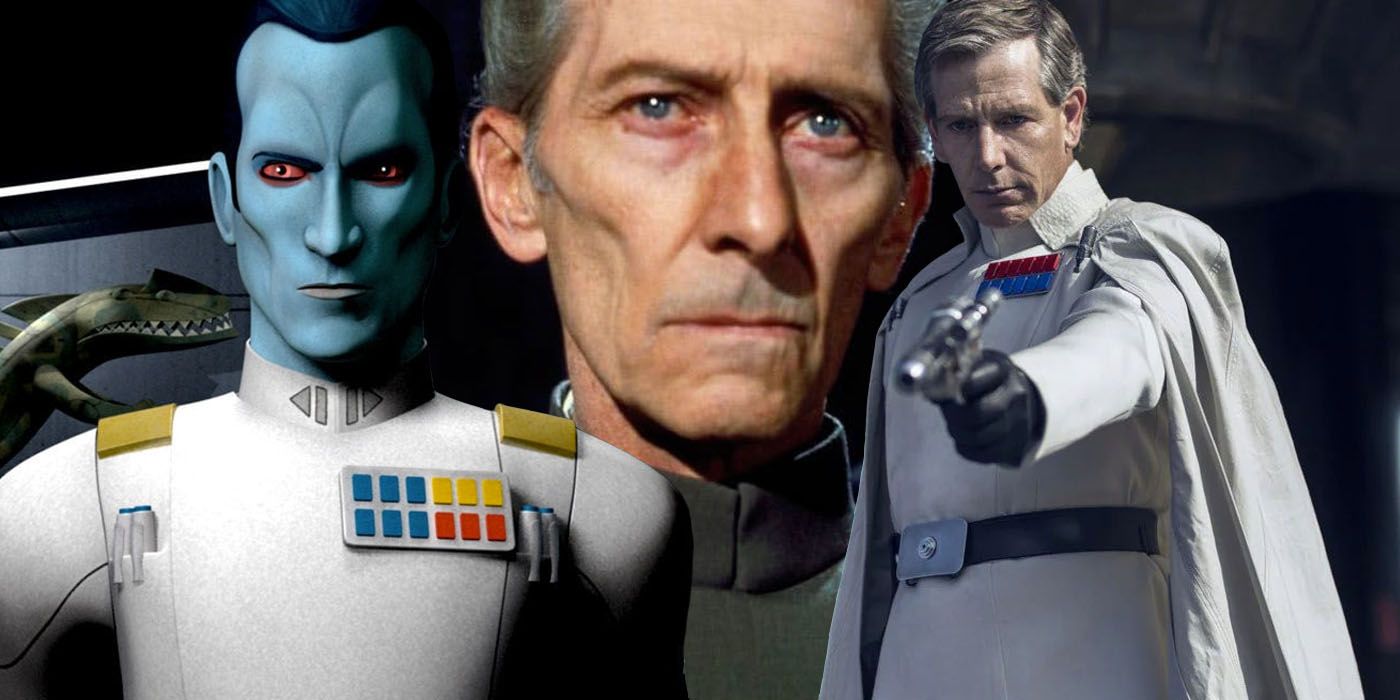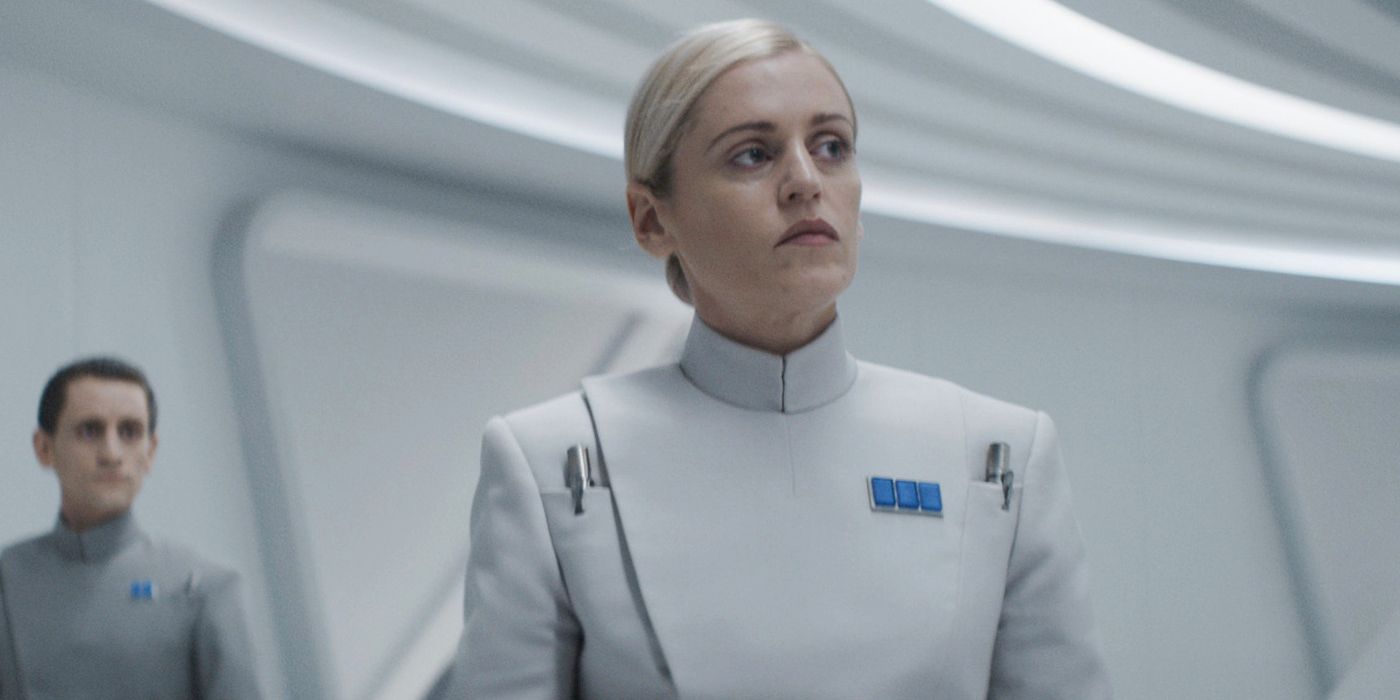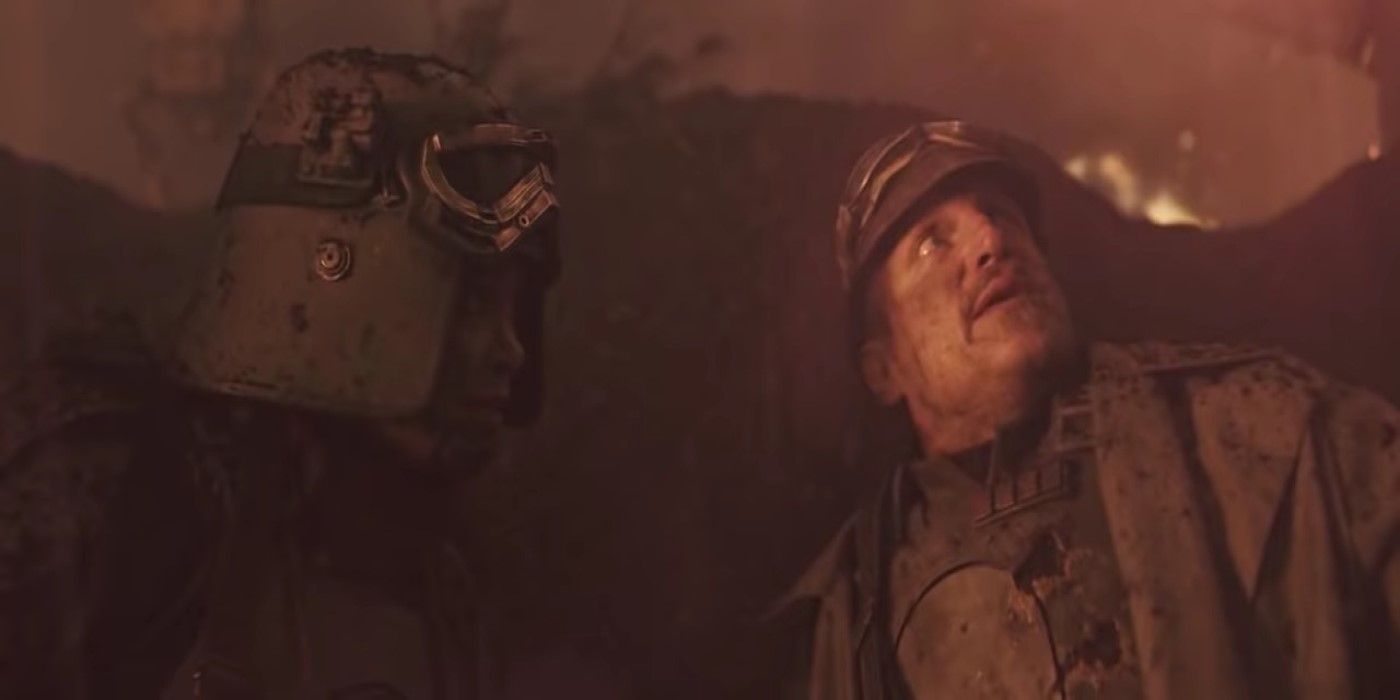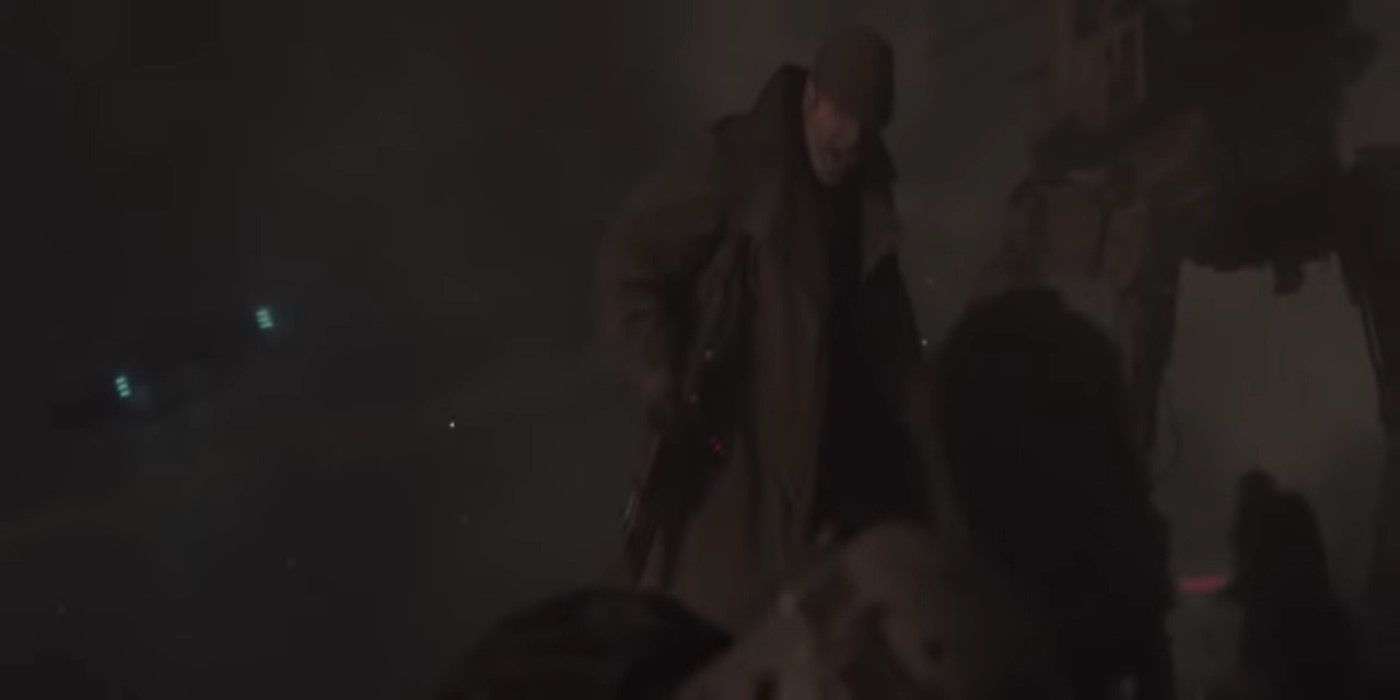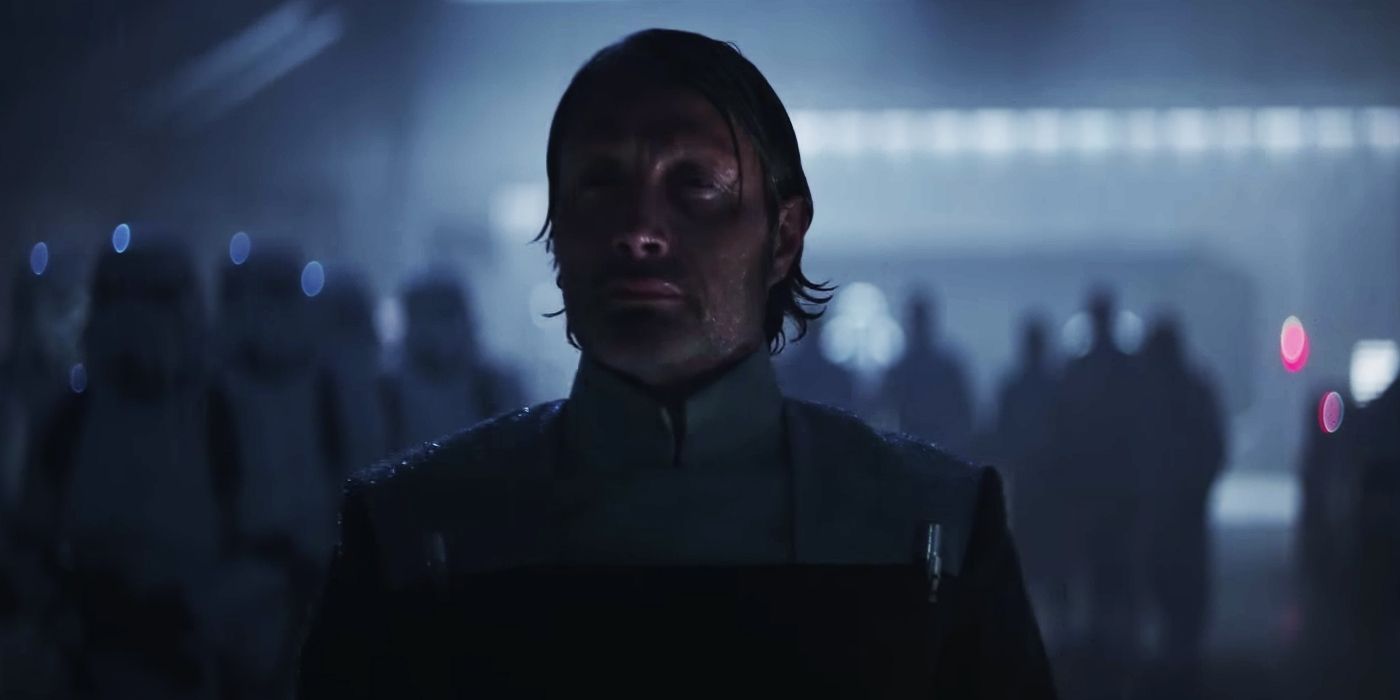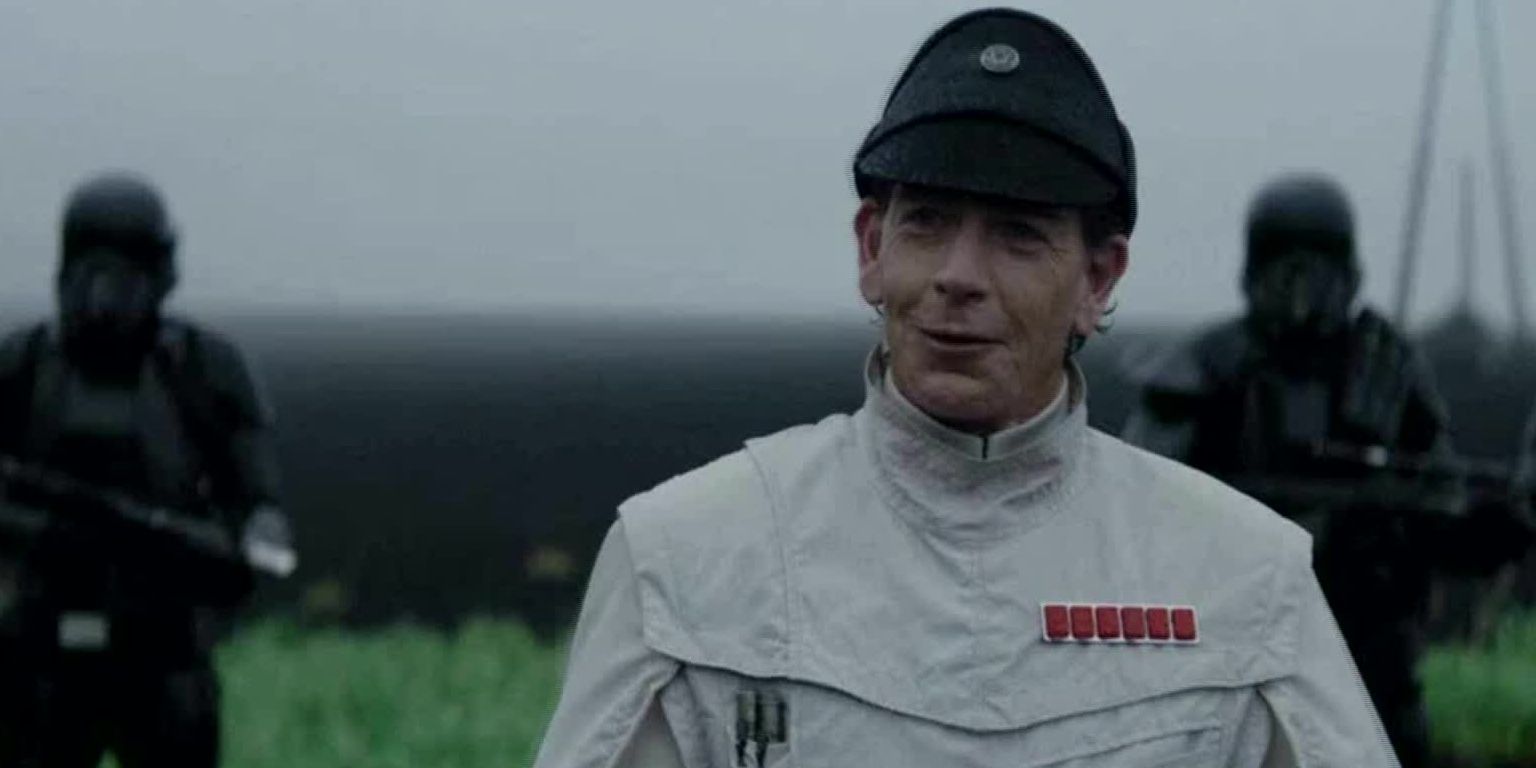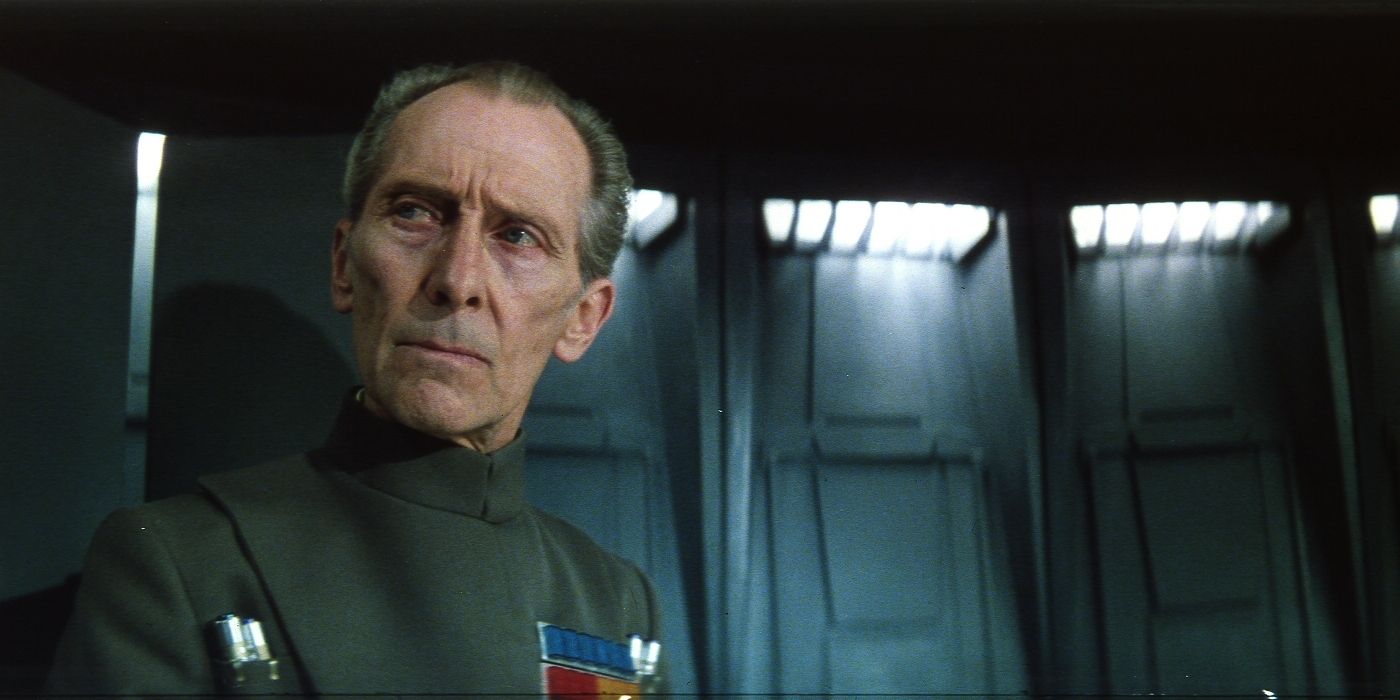Summary
- The Star Wars original trilogy had inconsistency in depicting Imperial Officer rank plaques, but recent live-action shows maintain consistency using single-layer badges of colored tiles.
- There are two eras for the Imperial Military: one before the destruction of the Death Star and one after. The key difference is that the badges in the first era are single-layer, while the second era has two vertically-stacked layers of tiles.
- Different ranks in the Imperial Military are identified by the color and arrangement of tiles in their badges. The badges also vary between different branches of the military, such as the Imperial Army, Navy, Starfighter Corps, and Stormtrooper Corps.
The Star Wars original trilogy introduced viewers to the evils of the Empire, and the badges and insignias worn by Imperial officers are actually quite important. The first Star Wars movie and Return of the Jedi tend to be inconsistent with their depiction of Imperial Officer rank plaques. In fact, all Imperial Officers seen in Return of the Jedi wear badges indicating the rank of Commander due to a mistake by the film’s costuming department. However, The Empire Strikes Back and most of Star Wars' recent live-action shows maintain a consistent portrayal. Thanks to costume designers Glyn Dillon and David Crossman, Imperial Officer ranks can be accurately identified by their single-layer badges of colored tiles.
Among the most prominent branches of the Imperial Military are the Imperial Army, Navy, Starfighter Corps, and Stormtrooper Corps. But in order to recognize the difference in Imperial ranks in the original trilogy, what has now been established are two eras for the Imperial Military, one before the destruction of the Death Star (shown in Rogue One: A Star Wars Story and Andor) and one after (seen in The Empire Strikes Back). The key difference between the two is that the first era’s badges were nearly always single-layer, while the second’s have two vertically-stacked layers of tiles. The first era is well-documented by canon, and the second is explained by Legends via the Imperial Sourcebook.
Lieutenant
|
Rank |
Design |
Example |
|---|---|---|
|
Lieutenant |
Three-tile badge |
Dedra Meero |
The lowest Imperial Officer rank shown in Star Wars is Lieutenant, identified by a simple three-tile badge in the first era. The Imperial Army uses two red tiles and one blue while the Navy uses two blue tiles and one red. Meanwhile, the Stormtrooper Corps and Imperial Security Bureau use three blue tiles, while Army Operations (non-combat units) have three yellow tiles. One Lieutenant in the first era is the sympathetic Dedra Meero, an ISB supervisor seen in Andor. In Rogue One, Cassian Andor disguises himself as an Army Lieutenant. In Legends, the second era’s Lieutenants are identified by a pair of red tiles on the top row, a pair of blue tiles on the bottom, and a code cylinder positioned next to the badge.
Captain/Naval Commander
|
Rank |
Design |
Example |
|---|---|---|
|
Captain / Commander |
Different designs in Imperial divisions |
Tobias Beckett |
The rank of Captain is identified in the Imperial Army by three red tiles and a single blue tile, while the Stormtrooper Corps and ISB both use four blue tiles and Army Operations use four yellow tiles. The rank’s Naval counterpart is that of Commander, which uses three blue tiles and a single red tile. In Solo: A Star Wars Story, Tobias Beckett notably disguises himself as an Army Captain, though he manages to successfully lead a contingent of Imperial Army Troopers (including Han Solo) on Mimban. In Star Wars Legends, the next rank up is Captain in the second era, and it is represented by a trio of red tiles above a trio of blue tiles, flanked on the right by a single code cylinder.

Complete Timeline Of All Star Wars TV Shows
There are several TV shows in the Star Wars canon. Here's a breakdown of every finished, ongoing, and upcoming Star Wars show in chronological order.Major/Naval Captain
|
Rank |
Design |
Example |
|---|---|---|
|
Major / Naval Captain |
Different designs in Imperial divisions |
Major Staz |
For Imperial Majors, stormtroopers and ISB Majors sport five blue tiles, while Army Operations Majors have four yellow tiles and one red tile. In the Imperial Army, Majors wear three red tiles and two blue ones, while their Navel counterparts, Captains, invert the color scheme, sporting three blue tiles and two red ones. The second era’s Legends counterparts are Commanders, whose badges include a top row of three red tiles, a bottom row of three blue tiles, and a pair of code cylinders flanking them on either side. In canon, a notable first-generation Major is Imperial Army Major Staz, who is promptly disintegrated by an artillery shell during the Mimban Campaign in Solo.
Colonel/Naval Commodore
|
Rank |
Design |
Example |
|---|---|---|
|
Colonel / Naval Commodore |
Different designs in Imperial divisions |
Galen Erso |
In the Empire’s first generation, the Imperial Navy’s rank of Commodore is represented by three blue tiles followed by three red tiles. The Imperial Army’s equivalent, a Colonel, reverses the pattern, with three red tiles followed by three blue ones. In the ISB and Stormtrooper Corps, the rank of Colonel is represented by six blue tiles, while Army Operations Colonels use five yellow tiles and one red tile. In Legends, a Colonel's second-generation counterparts are Majors, who wear a badge of four red tiles on top of four blue tiles, flanked on the right by a single code cylinder. ISB Colonel Wullf Yularen is seen sporting an Army Colonel rank badge in A New Hope, demonstrating the film’s inconsistency. Galen Erso, on the other hand, is an Army Operations Colonel and wears the appropriate badge in Rogue One.
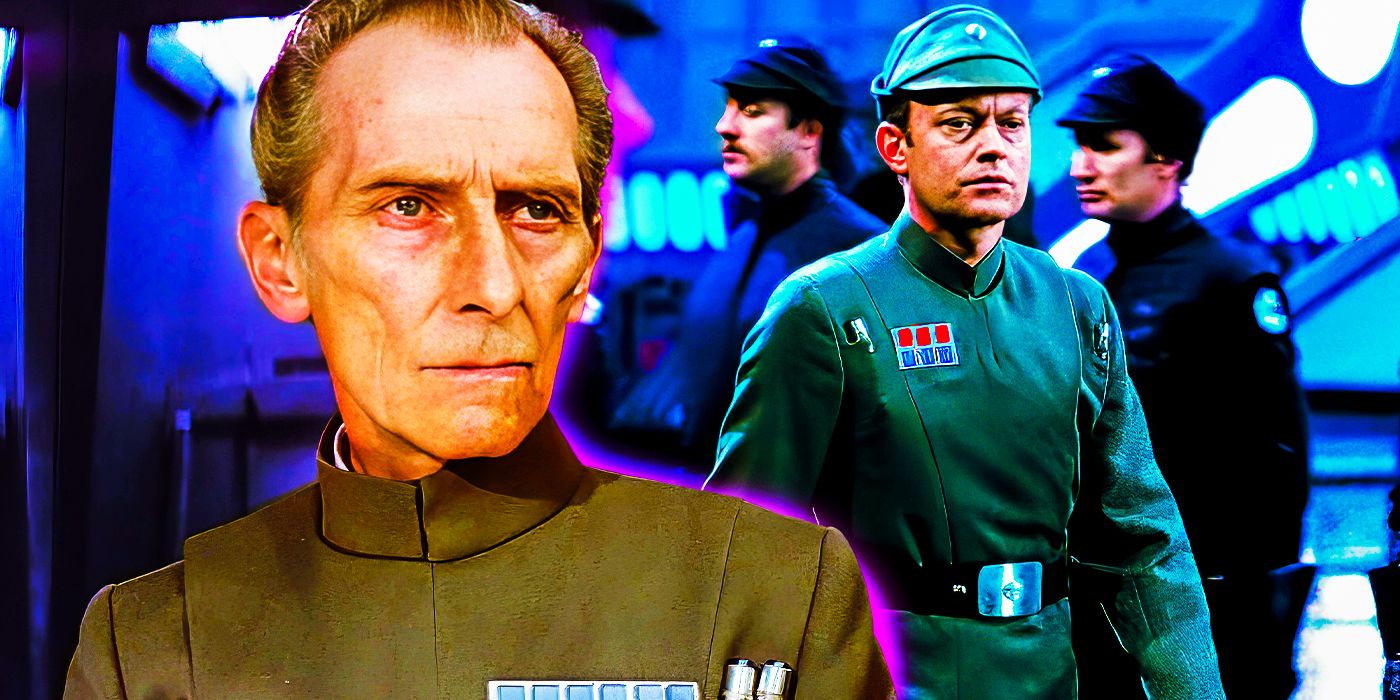
Star Wars' Imperial Officer Uniform Colors & Their Meaning Explained
The Imperial officers in Star Wars wear an array of different colored uniforms, often signifying their rank or the different branches of service.General/Naval Admiral
|
Rank |
Design |
Example |
|---|---|---|
|
General / Naval Admiral |
Different designs in Imperial divisions |
Orson Krennic |
One of the highest ranks shown in the Imperial Military’s first era is that of General. In the Imperial Navy, they're known as Admirals. Imperial Army Generals are identified by six red tiles, while Stormtrooper Corps Generals, ISB Generals, and Naval Admirals use six blue tiles. Army Operations Generals are identified by six yellow tiles, and Colonels in Legends, wear badges consisting of four red tiles on top of four blue tiles, flanked on either side by code cylinders. Throughout his Rogue One flashback sequences, Orson Krennic is shown wearing the badge of an Imperial Army General, revealing his initial Imperial Military branch.
Other Imperial Ranks
Even higher-ranking Imperials exist throughout Star Wars. In the Empire's first era, Orson Krennic sports a double-layered badge, indicating his rank of Director within the Imperial Military Department of Advanced Weapons Research. In Legends, Grand Moff Tarkin’s badge is identified as a Priority Sector High Commander. In the second era of Legends, Generals—such as Maximillian Veers—wear badges that were nearly identical to LMajors. Meanwhile, Legends-era Admirals, like Kendal Ozzel, wear badges consisting of six red tiles on top of six blue ones, flanked on both sides by code cylinders.
Grand Admiral Thrawn achieved one of the highest ranks in the Imperial Navy, which earned him a badge with three blue and three yellow tiles on the top row and three blue and three red tiles below it. And despite the Imperial Officer rank badges lacking meaning in A New Hope, the franchise has slowly repaired the badges' significance since then. While Imperial Officer ranks in the original trilogy can get confusing at times, Star Wars fixed its problem with the First Order in the sequel trilogy, which uses a combination of uniform color and arm insignia to denote an officer's rank.

